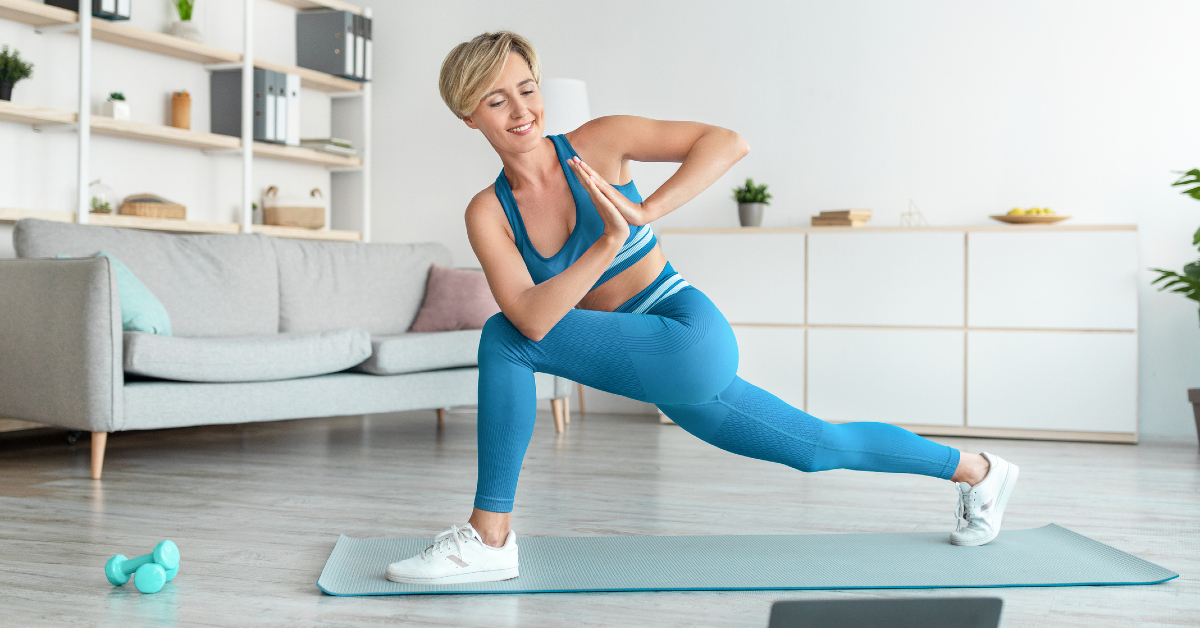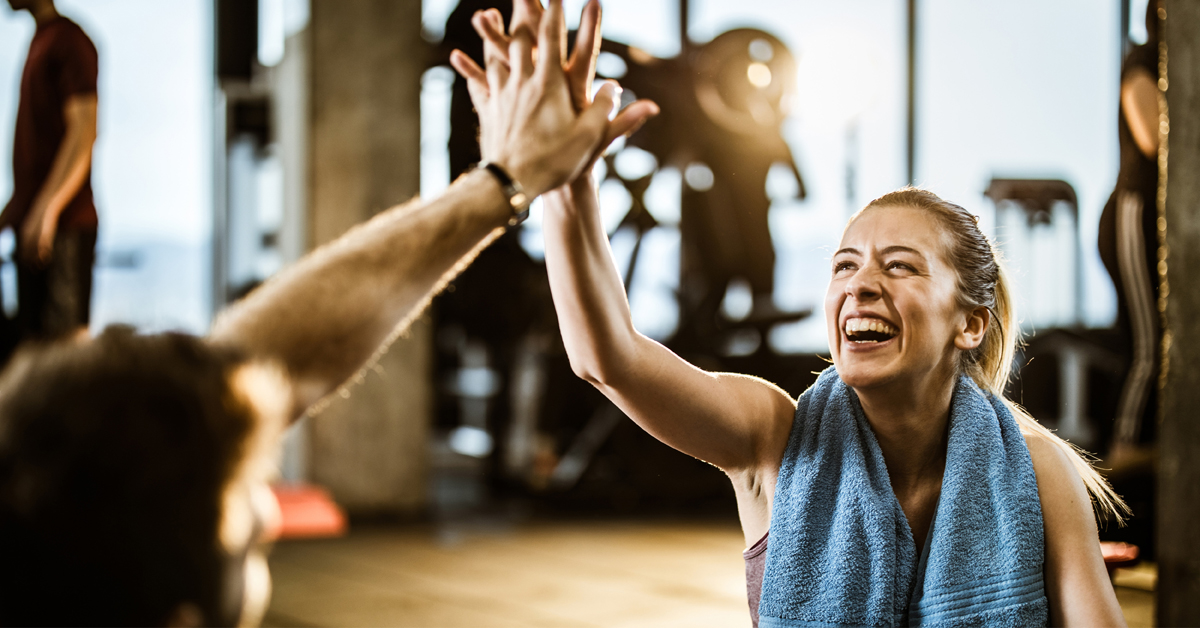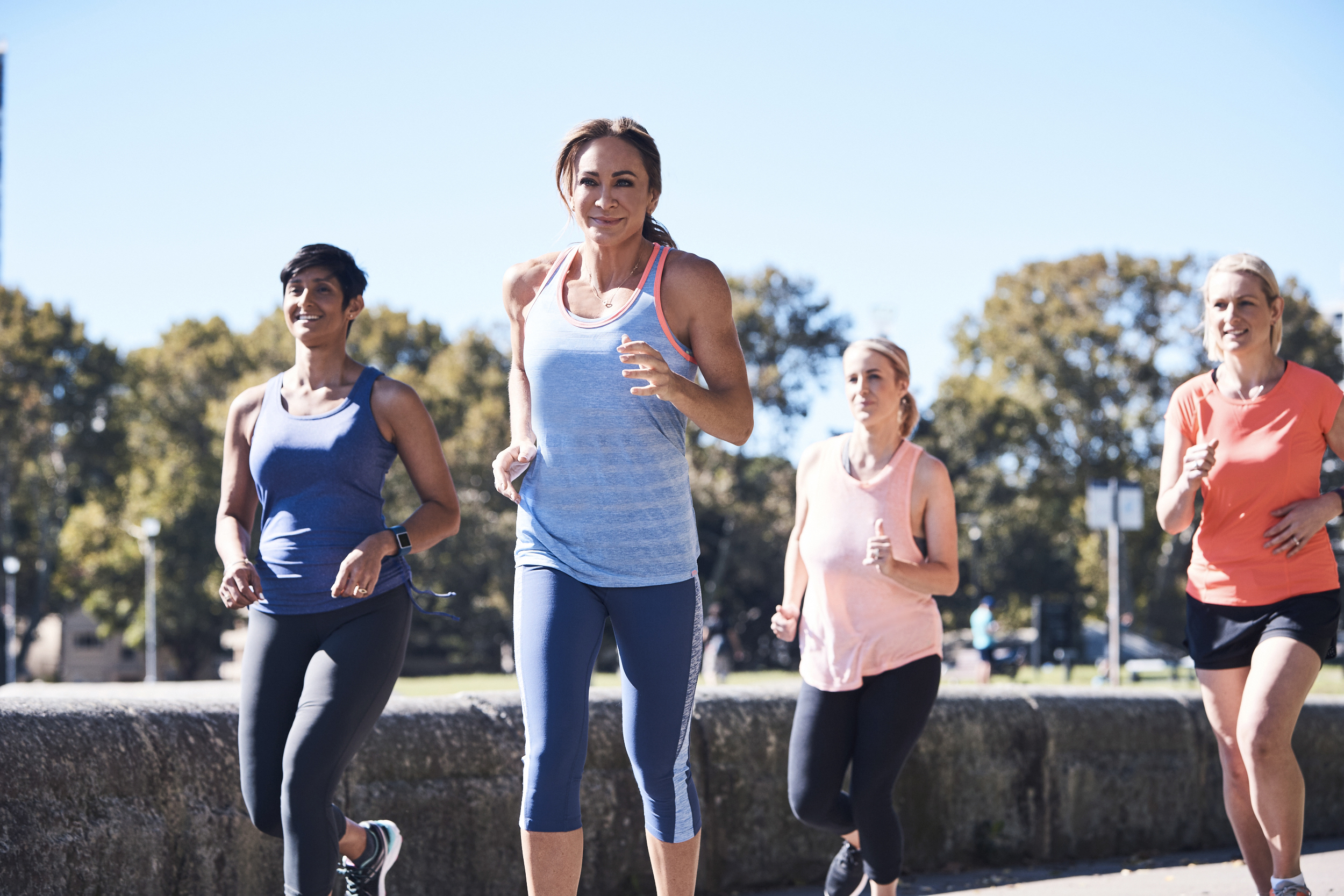Strength and core exercises are a vital part of training for any runner. They’ll improve your technique, correct your posture and keep you safe from injury. 12WBT tells you why strength exercises for runners are so important.
Once you’re bitten by the running bug, chances are you’ll never look back. It might hurt at times and you might even curse yourself under your breath while you’re doing it, but the endorphin rush and sense of accomplishment you experience at the end of a run are second to none.
No matter how much you enjoy pounding the pavement though, it’s important to diversify your training. “Strength and core exercises help you hold your body as well-balanced as possible while you’re running in order to maximise your performance and minimise the risk of injury,” says 12WBT running specialist Greta Truscott. “It’s vital to take a holistic approach to get the most out of your running.”
Do Try This at Home
The good news is you don’t even need a gym membership to strengthen your body for running. “Many of the best strength exercises for runners use your own body weight – such as lunges, single-leg squats and planks – because you need to carry your body weight with good posture and positioning to minimise the risk of injury in distance running,” says Greta. “There’s no point performing bodybuilding-type exercises if your goal is to run faster. You don’t want to be carrying around extra muscle mass.”
Even though the exercises don’t involve lifting heavy weights, Greta warns that you shouldn’t do too much too soon. “Strength and core work need to be adjusted to your level, with progressions implemented only after you’ve mastered each level so you’ll improve gradually and safely,” she explains. “12WBT has various program levels.”
How Often Should You Strength Train?
According to Greta, you should aim for three sessions a week. “Ideally, you’ll do two whole-body strength sessions and one core stability session,” she says. “In each of those sessions, you should be working on the muscles, posture and stabilising exercises that will help your running.”
So what should a typical week of running training look like then? “The 12WBT Learn to Run program and the 10km Training program have running sessions on Monday, Wednesday and Saturday, and the Half Marathon Training Program also includes a fourth easy run on the Thursday,” says Greta. “Then there are strength sessions on Tuesday and Thursday that include core exercises, plus a core strength session on Friday.”
Prevention of Common Running Injuries
While you should ideally strengthen your whole body, it’s a good idea to pay particular attention to the areas you know are weaker or prone to injury. The following strength exercises for runners will help you prevent the sport’s most common injuries.
When you sign up to one of the 12WBT running programs, you’ll be given detailed descriptions, videos and photographs demonstrating how to perform each exercise.
Runner’s Knee
This is a common injury among novice runners and is characterised by irritation and pain where the kneecap rests on the thighbone.
Exercises to prevent runner’s knee:
- Clams
- Hip Raises
- Reverse Plank
- Side Plank
- Hip Hitches
- Hip Hitch Holds
- Kneeling Core Balance
- Plus running drills such as Knee Hugs
Iliotibial Band Syndrome (ITBS)
ITBS occurs when the iliotibial band, which is a ligament that runs from the hip to the knee on the outside of the thigh, becomes irritated or inflamed and causes pain in the hip or knee. “Perform exactly the same exercises as those for runner’s knee to prevent ITBS,” says Greta.
Achilles Tendonitis
When the tendon that connects the two major calf muscles to the back of the heel bone is overused and becomes inflamed, pain results.
“Doing all your leg strength work will help take the pressure off the calves and the Achilles tendon,” says Greta. “In particular, strengthen your calves with standing calf raises. If your calves are weak or you’re recovering from injury, start with two-legged calf raises from the floor, and then progress to single-leg raises when you feel stronger. Progress from that to working from a step, and with them all, do both straight-leg and bent-leg variations so you target both calf muscle groups.”
Plantar Fasciitis
Runners who increase their distances too quickly or have low arches can cause inflammation and pain in their plantar fascia, the connective tissue that runs from the heel to the toes.
“As with the Achilles tendon, doing all your leg strength work – particularly standing calf raises – will help take the pressure off the plantar fascia,” says Greta. “Start with two-legged calf raises from the floor if your calves are weak or you’re recovering from injury, and then move on to single-leg raises. You can also perform self-massage on your plantar fascia by rolling your arches on a tennis or golf ball. Or try toe-scrunching: stand on a towel or mat and scrunch it up with your toes by flexing your arches.”
Shin Splints
This refers to lower leg pain on various parts of the shin that’s generally caused by increasing distances too quickly.
“The same advice goes for shin splints as for Achilles tendonitis and plantar fasciitis – do all your leg strength work and particularly standing calf raises,” says Greta. “To strengthen the muscles at the front of your shins, do penguin walking, where you walk on your heels and try to keep your toes off the ground. You can also perform self-massage on yours shins and calves before and after running.”
Hamstring Injuries
Weak hamstrings – the muscles that run down the back of your thighs – can easily be pulled while running.
Exercises to prevent hamstring injuries:
- Squats – various types
- Lunges – various types but particularly while walking forwards continuously
- Arabesque Lunges
- Hip Raises – two-legged and single-leg
- Step Ups
Ankle Sprains
If you frequently twist your ankle – which is particularly likely if your foot supinates, striking the ground with its outside edge – you could strain the muscles and tendons that stabilise the ankle and increase your risk of painful sprains.
“Doing all your dynamic leg strength work will help rebuild your ankle stability, but focus on squats, single-leg standing calf raises and arabesque lunges in particular,” says Greta.
Stress Fractures
When runners increase the intensity and volume of their training quickly and cause repetitive strain to the bones in their lower legs or feet, tiny cracks can appear in the surface of the bone.
“All leg strength and core work will help keep your muscles, bones and joints strong to minimise the risk of stress fractures,” says Greta.
Final Words of Wisdom
“Nip any niggles in the bud by monitoring your body every day and adjusting your training when required,” advises Greta. “Some muscle soreness one to two days after exercise is normal, but strains and injuries aren’t. They should be avoided by not pushing yourself beyond your limits. This could mean reducing your distances and intensity in order to recover adequately and avoid injury. If you’re injured and running is aggravating it, replace running with cross-training in another sport at the same intensity.”
12WBT’s running programs are developed by professional athletes and exercise physiologists. Access their expertise and improve your running – register your interest for the next 12 Week Body Transformation.







I have a quick quation, im 25 years old, I was a runner, when I was younger and in the mean while, I fall pregnant…. Can I still run again ? there is something within me that tells me to go for it, it’s been 7 years, will I be able to run again… my hearts wants too.. can you guys help plsss…
Hi there – Depending on how long ago it was that you gave birth and pending medical clearance from your doctor, yes you can certainly work on learning to run again. In fact we have a specific Learn to Run program that may interest you!
The Learn to Run (L2R) Program is for people who have never run before or who have had a long break from running. It is appropriate for you if you have between 5 – 30kg of weight to lose, are injury free and are keen to start running and build up gradually to achieve up to 5km running non-stop.
If you’re keen to join us, there are still a few days of May 2016 Pre-Season left, so you still have time to catch up in time for when the the round commences on 2nd May 2016. As long as you can set aside an hour or so each day over the next few days to work through them, you should be all ready to get going on Monday. If you don’t manage to finish them, you’re welcome to finish them during Week 1 in parallel with starting your Exercise and Meal Plans.
To join us for the May round please head to: https://go.12wbt.com/sign-up
Alternatively, June 2016 Pre-Season starts on 3rd May and the round kicks off 13th June 2016.
During Pre-Season you are asked to complete some simple tasks to set you up for success. Members who join closer to the start of the round still need to complete their Pre-Season Tasks.
Wishing you all the very best with your health and fitness journey and I hope that we see you on board!
Leila
12WBT Support Crew
I can’t thank you enough for this blog post, it’s terrific. The Iliotibial Band Syndrome (ITBS) is the EXACT pain that I have been having and I’ve tried everything, well I “thought” everything to overcome it. So glad to now have a path to strengthen that ligament. Thanks soooooo much.
Hi Carol,
Glad to hear you enjoyed the post. On ITBs, you might want to try using a foam roller on them to release some of the tension? Look online, seriously they are part of our toolkit for runners. Not just good for ITBs too, you can do all sorts of things on them including pilates exercises. It isn’t fun to roll your ITBs on them but it is incredibly effective!
Madeleine 12WBT